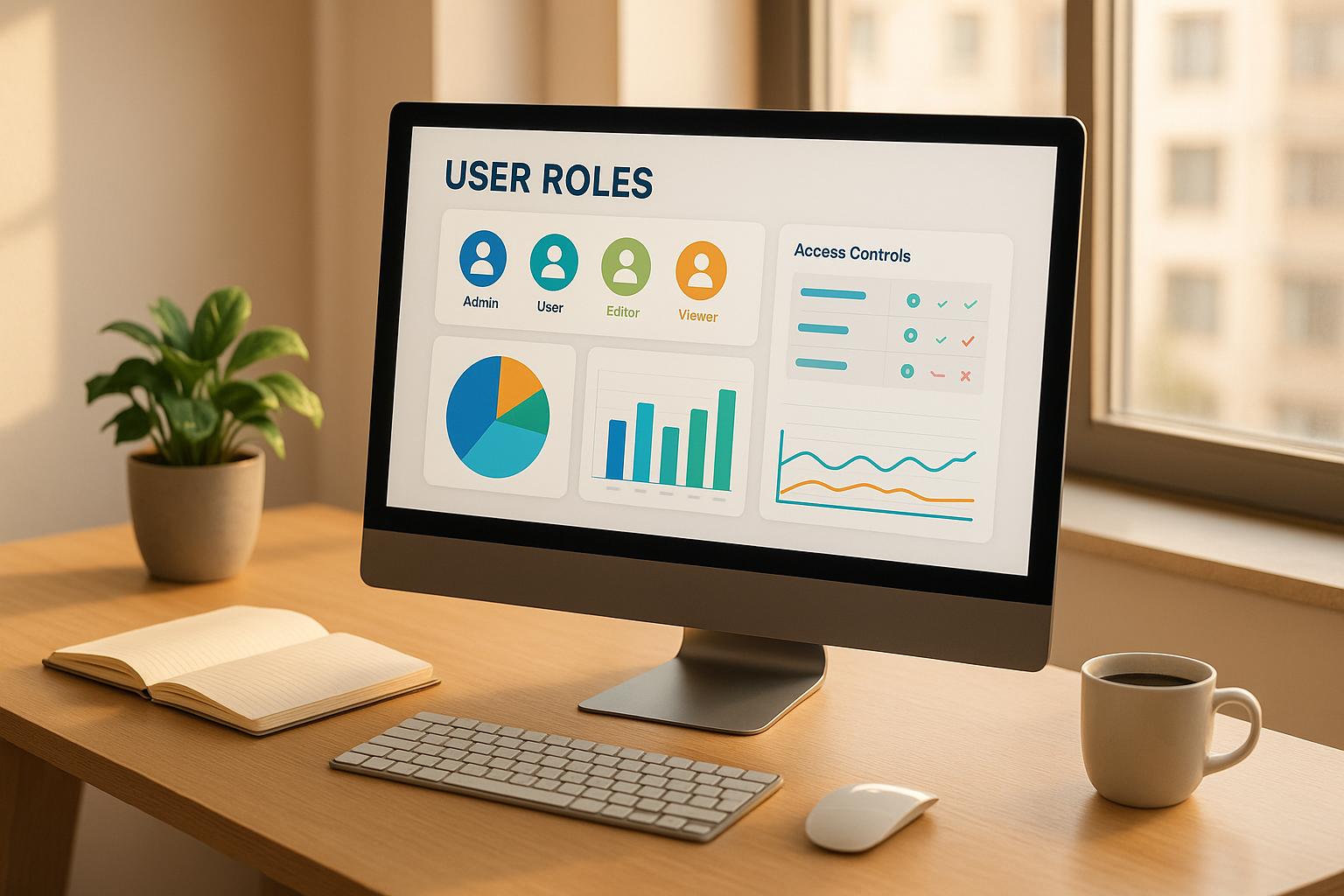AI is transforming cybersecurity by making threat detection faster, smarter, and more efficient. Here's why this matters for businesses:
- Endpoints Are Prime Targets: 90% of cyberattacks start at endpoints like laptops and servers.
- AI Detects What Others Miss: Unlike traditional tools, AI identifies unknown threats by learning normal behavior and spotting anomalies.
- Faster Response: AI reduces breach detection times by 108 days on average, saving businesses millions.
- Cost-Effective for SMEs: AI levels the playing field, allowing smaller teams to defend against sophisticated attacks.
AI-powered tools automate threat detection, use behavioral analytics for early warnings, and integrate real-time global threat intelligence. They’re essential for businesses looking to stay ahead of evolving cyber threats. Keep reading to learn how to integrate these tools and protect your business.
Real Threat Hunting with AI and ML
How AI Improves Endpoint Threat Hunting
AI is changing the game in endpoint threat hunting by adding automation, intelligence, and speed to cybersecurity efforts. Instead of relying on slow, manual processes, AI-driven systems work continuously to detect and respond to threats in real time. Here's how AI is reshaping key aspects of endpoint threat hunting.
Automated Threat Detection and Analysis
AI takes endpoint threat detection to the next level by automating the process and delivering rapid responses. Using machine learning and pattern recognition, AI can sift through massive amounts of data to identify potential risks much faster than human analysts ever could. This means it can quickly spot anomalies or vulnerabilities and immediately initiate security protocols, such as blocking suspicious IPs or resetting compromised credentials. Plus, organizations can integrate AI tools with their existing security systems via middleware or APIs, making it easier to improve threat detection without completely rebuilding their infrastructure.
Behavioral Analytics for Early Threat Detection
AI is particularly effective at learning what "normal" looks like in a network, application, or user behavior. Once it establishes this baseline, it can quickly detect deviations that might signal insider threats, malware, or unauthorized access. Unlike traditional methods that rely on known threat signatures, this approach identifies risks that might otherwise go unnoticed. With the ability to monitor multiple systems simultaneously, AI provides a more comprehensive view of potential threats. Gartner’s Emerging Tech Impact Radar: Security highlights how these advanced capabilities are crucial for identifying evolving risks. To maximize its impact, organizations should integrate behavioral analytics with tools like SIEM, EDR, and NDR, creating a robust, unified security framework.
Threat Intelligence Integration
AI also strengthens endpoint threat hunting by incorporating real-time global threat intelligence. By automating the collection and analysis of data from various sources, AI platforms can correlate external threat data with internal logs to uncover indicators of compromise quickly. This capability allows organizations to stay ahead of attackers by identifying trends from global attack campaigns, telemetry, and even dark web activity, enabling predictive threat modeling. While AI doesn’t replace human analysts, it enhances their efficiency by handling repetitive tasks like log analysis and vulnerability scanning. For the best results, organizations should integrate AI-powered threat intelligence with existing tools like firewalls and intrusion detection systems, creating a layered defense strategy that bolsters their overall security posture.
How to Add AI Tools to Your Business Operations
Integrating AI-powered tools into your business operations, particularly for endpoint threat hunting, doesn’t have to feel like a daunting task. With a clear plan, small and medium-sized businesses can seamlessly incorporate these tools into their existing security systems. Here’s a straightforward guide to get you started.
Review Your Current Security Setup
Start by evaluating your current security environment. Take an inventory of all connected devices, including desktops, laptops, mobile devices, and IoT gadgets. Use automated tools to scan and catalog these endpoints, gathering details such as operating systems, installed software, and security configurations.
Define key performance indicators (KPIs) to measure your security effectiveness. These might include detection rates, response times, patch management efficiency, compliance levels, and user awareness. Document the tools you already use - like endpoint detection systems, antivirus software, anti-malware programs, and firewalls. Analyzing logs through Security Information and Event Management (SIEM) systems can help you identify threats and establish normal activity patterns.
Focus on critical endpoints that handle sensitive data, using a risk-based approach. Regular audits, including vulnerability assessments and penetration tests, can highlight weaknesses in your system. Establishing a baseline for network activity is crucial, as it allows AI systems to spot unusual behavior more effectively.
"AI holds tremendous potential and that in itself makes people apprehensive. When it comes to how to use AI, I always caution businesses to deploy a people-centered approach."
- David Jones, Senior Managing Director at Robert Half APAC
Once you’ve established your security baseline, you can move on to selecting AI tools that fit well into your existing framework.
Choose the Right AI Tools for Your Business
Finding the right AI tools starts with understanding your specific needs. Consider the types of threats you face, the data you have, the structure of your team, and your existing security processes. Use your earlier security audit to pinpoint gaps and prioritize features. Differentiate between must-have capabilities and those that are simply nice to have. It’s essential to choose tools that integrate smoothly with your current systems, avoiding the need for a complete overhaul.
Before committing, test potential AI solutions using your own data. Look for tools that can scale as your business grows, handling larger data volumes and more endpoints over time. User-friendly options are also critical - they reduce training time and help your team adopt the technology faster.
For small and medium-sized businesses exploring options, platforms like AI for Businesses offer curated collections of tools designed to enhance security operations.
Train Your Team and Track Performance
Once you’ve selected the right AI tools, focus on preparing your team to use them effectively. Develop training programs tailored to the specific applications you’ve chosen. Keep in mind that AI evolves quickly, so ongoing education is essential.
"AI training is not a 'one-off' session. AI itself is rapidly evolving and organizational training needs to support this. One online course won't suffice – take the time to invest in continuous and collaborative learning that will help your employees to grow with AI."
- David Jones, Senior Managing Director at Robert Half APAC
Encourage continuous learning to help your team stay updated on AI advancements. This includes honing both technical skills and soft skills to ensure effective collaboration with AI systems. For example, a CSIRO report found that 68% of Australian businesses using AI have saved an average of 30% on time for AI-related initiatives.
To measure success, implement real-time monitoring tools to track performance metrics and address any issues as they arise. Establish feedback loops to refine your AI models based on user and system insights. Regular audits and detailed documentation will ensure compliance and support ongoing improvements.
Effective collaboration between humans and AI combines the speed and pattern-detection capabilities of AI with human oversight for context and strategic decision-making.
| Metric Category | Key Examples | Purpose |
|---|---|---|
| Performance Metrics | Accuracy, Precision, Recall, F1 Score | Measure how well the AI system performs |
| Operational Efficiency | Response Time, Throughput, Error Rate | Evaluate processing speed and scalability |
| Fairness and Ethics | Demographic Parity, Equal Opportunity | Identify and reduce bias in AI systems |
sbb-itb-bec6a7e
Benefits of AI-Powered Endpoint Threat Hunting for SMEs
Small and medium-sized businesses (SMEs) face the same sophisticated cyber threats as large enterprises, but they often lack the resources to tackle these dangers effectively. AI-powered endpoint threat hunting helps bridge this gap, offering robust protection that was once only available to larger organizations. Beyond basic security upgrades, these tools reshape how SMEs approach cybersecurity, delivering advantages in speed, cost efficiency, and adaptability.
Faster Threat Detection and Response
When it comes to cyber threats, speed is everything. AI-powered systems significantly reduce the time it takes to detect and respond to threats - sometimes cutting detection times from minutes to mere seconds. By continuously analyzing real-time data, AI can spot anomalies faster than human analysts ever could.
Take Fortinet's AI-driven Security Information and Event Management (SIEM) system, for example. Designed with small businesses in mind, it enables smaller teams to handle complex security tasks with ease. Users of Fortinet's platform report a 70% reduction in incident response times. Similarly, Siemens partnered with Darktrace to implement an AI-based cybersecurity solution, achieving a 90% improvement in identifying advanced persistent threats.
AI systems don’t just detect threats quickly - they can also act on them automatically. Pre-configured actions like isolating compromised endpoints, blocking suspicious IP addresses, or revoking access can be triggered instantly, stopping attackers from spreading deeper into the network.
Cost Savings and Smarter Resource Allocation
The financial perks of AI-powered threat hunting go far beyond the initial setup costs. Companies using automated detection tools save an average of $2.22 million annually. While SMEs may not see savings of this scale, the relative impact can still be game-changing.
AI reduces the burden of manual threat detection by automating routine processes and minimizing false positives, allowing IT staff to focus on higher-priority tasks . For businesses with limited IT resources, this efficiency boost is invaluable.
ZScalar’s AI platform, designed specifically for SMBs, showcases these savings in action. By integrating security and networking into a single service, it helps cut security management costs by 50%. This combination of reduced costs and enhanced performance makes AI tools especially appealing for budget-conscious organizations.
The 2024 Ponemon Institute State of AI in Cybersecurity Report underscores this point, with 70% of respondents highlighting AI's effectiveness in spotting threats that traditional tools miss. AI platforms also consolidate multiple security functions into one solution, reducing the need for numerous tools. This consolidation lowers licensing fees, simplifies management, and minimizes training requirements. Together, these advantages make AI a practical and cost-effective choice for SMEs.
Stronger Defense Against Emerging Threats
Unlike traditional systems that depend on static threat signatures, AI-powered tools adapt and learn from past incidents, making them highly effective against emerging threats.
AI systems continuously monitor network activity, using behavioral analysis to detect anomalies that could signal an attack. This capability allows them to identify zero-day vulnerabilities and advanced threats that traditional tools might overlook.
For example, SentinelOne’s AI-powered endpoint protection uses predictive threat detection to reduce ransomware impacts by up to 95%. Its behavioral intelligence doesn’t just react to known threats - it anticipates potential attack paths, enabling businesses to reinforce their defenses before a breach occurs.
These capabilities are trusted by major organizations worldwide. Aston Martin, for instance, replaced its legacy security system with SentinelOne to protect its rich motoring heritage. Similarly, one of the largest K-12 school systems in the U.S., located in Nebraska, uses SentinelOne to secure a wide range of devices, including MacOS, Windows, Chromebooks, and mobile platforms.
The cybersecurity landscape is evolving at breakneck speed. By 2030, the AI cybersecurity market is expected to reach $134 billion, up from $30 billion in 2024. This growth highlights the increasing reliance on AI as the cornerstone of modern cybersecurity.
For SMEs, this shift means access to advanced protection capabilities that were once reserved for large enterprises with extensive budgets. AI operates around the clock, processing vast amounts of data and responding to threats instantly. Replicating this level of protection manually would require enormous human resources - something AI eliminates, making it an indispensable tool for smaller businesses.
Conclusion and Next Steps
Key Takeaways
AI is changing the game in threat hunting, making detection and response faster and more efficient. With AI-powered endpoint threat hunting, businesses can quickly identify risks, scale their security efforts as they grow, and access advanced protection - even for smaller organizations. These tools can process massive amounts of data almost instantly while staying ahead of new and evolving threats. To put it into perspective, the global market for AI-driven cybersecurity products was valued at $15 billion in 2021 and is expected to skyrocket to approximately $135 billion by 2030.
But adopting AI tools isn’t just about plugging them in and walking away. Success depends on thoughtful planning and ongoing effort. Businesses need to ensure these tools work seamlessly with their current security systems, train their teams in both AI and cybersecurity, and consistently review and improve their defenses. Choosing the right tools is key to unlocking the full potential of AI for your business.
Find AI Tools with AI for Businesses
Ready to take advantage of these tools? Head over to AI for Businesses to explore and compare AI solutions designed to boost your endpoint threat hunting. Whether you’re looking for NGAV or EDR solutions, you’ll find options tailored to your budget and technical needs.
This platform offers a curated selection of AI applications, including cybersecurity tools that can transform how you detect and respond to threats. It’s specifically designed with SMEs and growing businesses in mind, helping you quickly identify solutions that align with your goals. By streamlining the research process, the platform allows you to focus on what matters most - implementing and optimizing your security strategy.
FAQs
How does AI compare to traditional cybersecurity tools in identifying new and evolving threats?
AI takes cybersecurity to the next level by using machine learning to process massive amounts of data in real-time. Unlike older tools that rely on fixed rules or known threat signatures, AI can spot unusual patterns and behaviors that hint at new, previously unseen threats.
What sets AI apart is its ability to learn and improve over time. By constantly refining its detection techniques, AI stays one step ahead of increasingly advanced cyberattacks. This makes it a powerful asset for businesses aiming to strengthen their endpoint threat detection and bolster their overall cybersecurity measures.
How can small and medium-sized businesses integrate AI tools into their security systems effectively?
To effectively weave AI tools into their security systems, small and medium-sized businesses (SMBs) should follow a structured approach. Start by pinpointing the specific pain points or inefficiencies in your current security setup. For example, AI can be a game-changer in areas like detecting threats faster or automating repetitive, time-consuming tasks. A detailed review of your existing processes can help uncover where AI can make the biggest impact.
Once you've identified these areas, take it step by step. Begin with smaller, manageable AI applications - tools that are easy to implement and address immediate needs. As your team grows more familiar with the technology, you can gradually introduce more advanced AI solutions. This phased approach not only reduces risk but also helps minimize disruptions to your daily operations.
Finally, keep a close eye on how these AI tools perform. Regular monitoring and evaluation are crucial to ensure the tools stay effective against new threats and continue to meet your business goals. Adjustments may be needed as both your business and the security landscape evolve.
With this methodical approach, SMBs can strengthen their security systems while transitioning smoothly into the AI era.
How do AI-powered tools help small and medium-sized businesses save on cybersecurity costs?
AI-driven tools are transforming the way small and medium-sized businesses (SMBs) manage cybersecurity, offering a cost-effective solution to complex challenges. By automating the detection and response to cyber threats, these tools process massive amounts of data in real time. This means potential risks are identified faster and with greater precision compared to traditional, manual methods. The result? Lower labor costs and improved operational efficiency.
One major advantage is the reduction of false positives. With fewer unnecessary alerts, security teams can zero in on real threats, saving both time and resources. On top of that, quicker detection and response times help SMBs avoid expensive data breaches and system outages, cutting down on financial risks. For businesses operating on tight budgets, the blend of automation, precision, and affordability makes AI-powered tools a game-changer in strengthening cybersecurity defenses.


